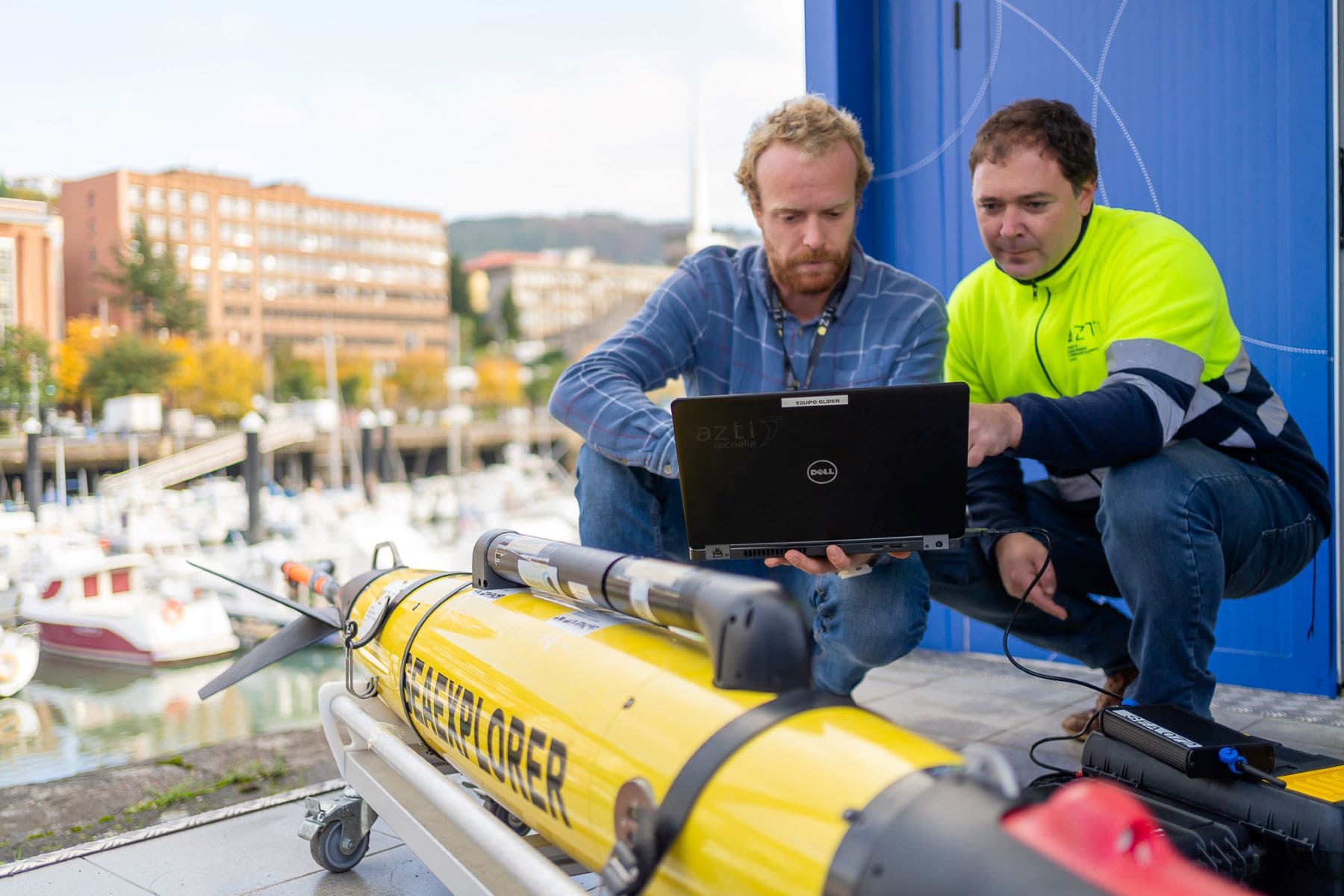Azti has incorporated two autonomous submarines into the observation network of the Basque coast in order to study marine ecosystems. The Provincial Council of the province of Gipuzkoa supports the initiative through its support program for the Science, Technology and Innovation Network.
Within the framework of the BIGFIS project, the scientific and technological center has been coordinating since 2024 a detailed analysis of how ocean circulation influences essential cycles that support the production of nutrients from phytoplankton, which is the base of the oceanic food chain.
Bigfis submarine project
Understanding the biogeochemical cycle – which includes the exchange and transformation of vital elements such as carbon, nitrogen and oxygen between organisms and their environment – is crucial. In this context, AZTI has been coordinating since 2024, within the framework of the BIGFIS project, a detailed analysis of how ocean circulation influences these essential cycles that support phytoplankton nutrient productionbase of the oceanic food chain.

The project, financed by the Provincial Council of Gipuzkoa, uses two innovative autonomous underwater gliders, known as gliders. equipped with advanced sensors. These devices are capable of traveling along the Basque coast to track oceanic biogeochemical processes and provide data to the existing observation network that contributes to monitoring the evolution of the effects of climate change on marine ecosystems. This information, together with additional observations from satellites or existing observation platforms in the area such as high-frequency radars and mooring buoys, helps to improve the understanding of the relationship between physics and biogeochemistry to better understand their impact on these ecosystems.
“The task of monitoring biogeochemical changes in the water column is complexbut thanks to our gliderswe can take detailed and extensive measurements, covering up to 1,000 meters deep and more than 1,000 kilometers away, for periods of up to one or two months,” explains Iván Manso, AZTI marine technologies expert and project coordinator.
Additionally, these devices have minimal environmental impact, as they operate in complete silence and move through changes in their buoyancymaking sawtooth-shaped trajectories. “Every time they emerge to the surface, they transmit the collected data and receive instructions for their next movements,” adds Manso.
Los gliders offer a unique perspectiveproviding three-dimensional information that illustrates the interaction between ocean physics and the biogeochemical cycle. The gliders are equipped with hydrographic sensors to measure water temperature and salinity. In addition, one of them includes additional sensors to measure levels of oxygen, turbidity, chlorophyll, dissolved organic matter and nitrates. The other can detect schools of pelagic fish thanks to an echo sounder.
Invaluable data
These devices not only enrich the advanced observation network of Euskadi, but also provide data with wide spatiotemporal coverage in places that are difficult to sample. This network includes the Marine Climate Change Observatory of the Bay of Bizkaia OBSERVAMAR and the EuskOOS Operational Oceanography System, operated by AZTI in collaboration with Euskalmet, which offers real-time data on the state of the sea from the Basque coast to 150 kilometers offshore. .

